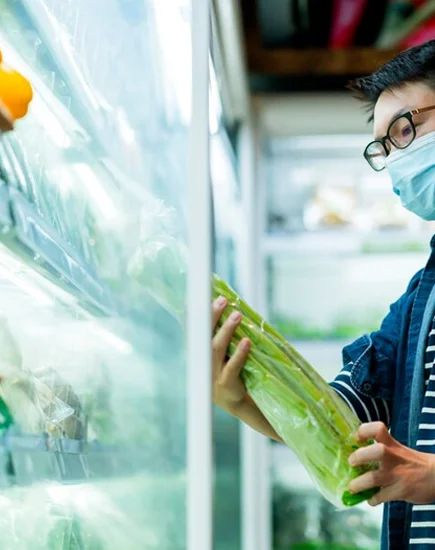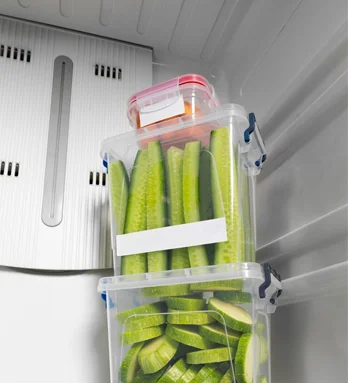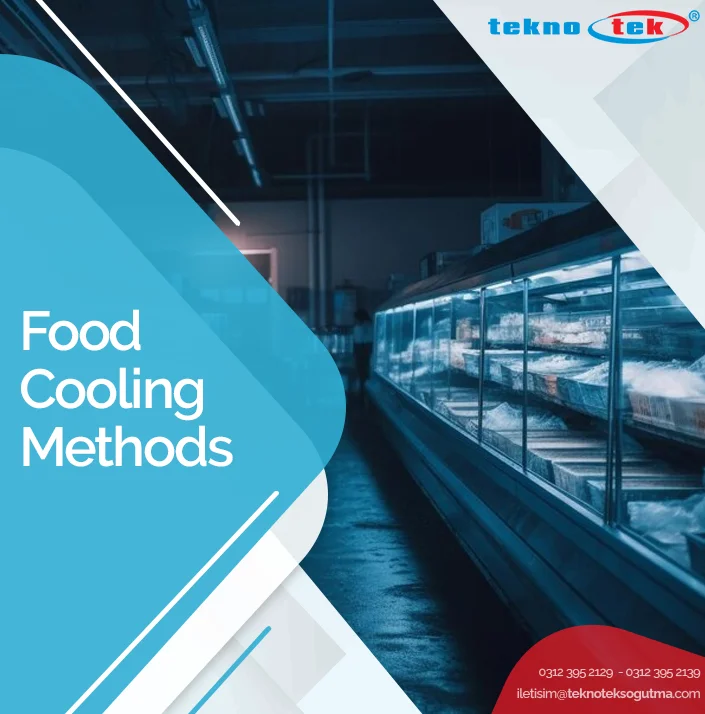Food cooling methods are essential processes used to preserve the freshness of food, prevent spoilage, and extend shelf life. The applied cooling process slows down the activity of bacteria and enzymes present in food products.
Food cooling methods are used in many areas, ranging from industrial production to domestic use. Applying cooling methods plays a crucial role in ensuring hygiene and quality control. Therefore, it is important that these methods are applied correctly.
Food cooling methods include:

What Are Food Preservation Methods?
Food preservation methods and their purposes are aimed at maintaining the freshness, nutritional value, and safety of foods. All techniques developed for this purpose involve appropriate storage methods for different types of food. These techniques include heating, drying, canning, vacuum packaging, and methods based on cold storage.
The chosen method depends on the type and durability of the food. For example, for perishable products, frozen preservation or cold chain techniques are of great importance. The cooling cycle applied to ensure continuity in food safety helps keep perishable items at a constant temperature.
The pre-cooling process applied for the preservation and safe delivery of fruits and vegetables is also crucial. This process rapidly cools the harvested products, preventing spoilage. Following this, products are kept in environments like a cold storage room. In cold storage rooms, mechanical cooling systems are used to maintain a constant ideal temperature.
The performance of the cooling system is a key factor in ensuring the long-term preservation of food. The system removes heat from the product, allowing it to be kept at or just above its freezing point. Among preservation methods, the cooling system stands out as one of the most effective and reliable options.
Why Are Food Preservation Methods Important?
Food preservation methods are critically important for both producers and consumers in terms of food safety. These methods ensure that food is preserved in a safe, healthy, and economical manner.
By nature, food products are prone to spoilage over time. They may lose nutritional value and provide a breeding ground for harmful microorganisms. Therefore, for food to reach consumers without spoiling, the correct application of preservation methods is essential. This helps prevent both health risks and economic losses.
The importance of food preservation methods includes:
- Prevents spoilage. Preserving products inhibits the growth of microorganisms, keeping them fresh longer.
- Maintains nutritional value. Preservation prevents the loss of nutrients such as vitamins, minerals, and proteins.
- Reduces food waste. Extending shelf life lowers the rate of waste and promotes efficient use of resources.
- Ensures food safety. When food reaches the consumer, the risk of bacteria and toxin formation is minimized.
What Should Food Storage Facilities Be Like?
To store and preserve products safely, they must be kept in cold storage rooms. These areas must meet all necessary structural and technological conditions. Regulating temperature, humidity, and air circulation in storage spaces is one of the most critical aspects of food safety.
One important consideration is that cold storage areas should be arranged based on the type of product being stored. Each section should include control systems appropriate to its required temperature. For instance, the storage requirements for dairy products, fruits, and vegetables differ significantly.
The main goal of the cooling cycle used in storage areas is to maintain a constant internal temperature. With this system, products are kept cold, which extends shelf life and prevents quality degradation. Integrated with the cold chain, products are preserved from production to consumption without spoilage.
The cooling system should prevent temperature fluctuations in the storage area while also offering energy efficiency. Only with such systems can products be preserved for extended periods.

In addition, food storage facilities are not merely places for holding goods. These systems should also provide sustainable solutions. In doing so, businesses not only maintain product quality but also preserve the economic value of the goods through reliable cold storage infrastructure.
For more detailed information about food cooling methods, you can contact Teknotek.

